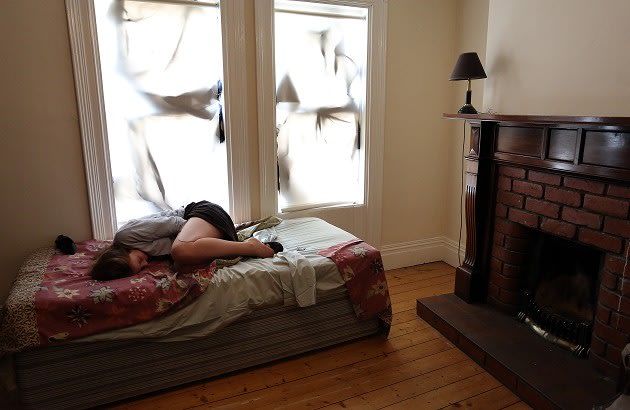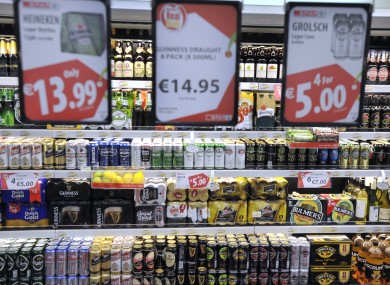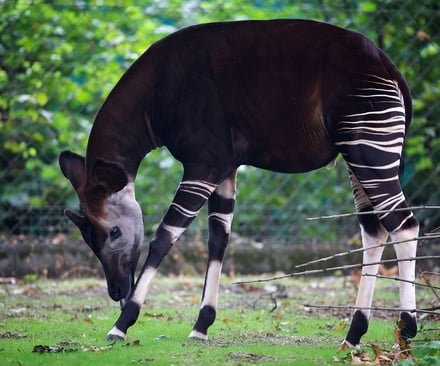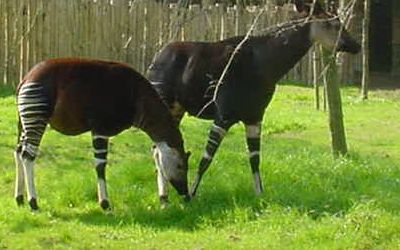Growing numbers of Irish teenager’s being gang-raped
“SAYS A REPORT”


Cari said it was alarmed by the dramatic rise in reports of attacks by multiple perpetrators in 2012, which doubled to 41.
Mary Flaherty, chief executive, said staff also recorded a 162% increase in rape and sexual assault allegations on under 18s, from 132 to 351.
She revealed teenagers told volunteers they often felt culpable in attacks, were witnessed or sometimes encouraged by others, and left traumatised by recordings which were viewed or discussed on social media sites.
“The sexualisation of children and young people and easy access to pornographic imagery plays a vital role in how young people perceive sex and sexuality,” she said.
“The nature of our calls has changed so much in the past 20 years that this issue needs to be addressed.
“Social networking sites also need to play a role in child welfare and protection – which to date they have not done.”
Ms Flaherty said a 13% cut in State funding last year impacted severely on services, leading to the closure of its service in Cork and all staff being laid off for a month.
Therapy hours had to be cut by 7% nationwide, from 2,650 hours in 2011 down to 2,474, leaving more than 50 children who were sexually abused on a waiting list for therapy by the end of the year.
Ms Flaherty said it was an appalling indictment on the nation that some of the 3,300 youngsters who report abuse to health chiefs each year are being let down.
“Children in Ireland continue to be sexually abused every day and we continue to fail them,” she said.
“If you are an adult who has experienced abuse, either in the last 24 hours or as a child, you have access to counselling in every health board area. You also have rape crisis and domestic violence units nations.
“If you are under 18 you only have support two children’s hospitals in Dublin and a service in Limerick which we run.”
The helpline took 1,493 calls during the year, up 4%.
They included 1,182 where a child spoke about their ordeal, 208 silent calls which were seen as a victim’s first step for help and 104 that went unanswered due to resources, a 30% drop on 2011.
The majority of allegations involved a family member and some parents raised concerns over the sexualised behaviour of their teenagers, although no abuse had taken place.
Cari, which also supported 64 children or family members through the criminal courts, also criticised the three to four year delays in cases which impact on a child’s life and healing process.
Majella Ryan, acting national clinical director, said the long term effect of child sexual abuse on children when they do not receive the appropriate interventions is well documented.
“Children as young as eight years old present with thoughts of suicide, self-harm and mental health issues,” she added.
“Many struggle at school as a result of their experiences.
“When left untreated, they can go on to develop problems with addiction, social skills and many other things that can make life difficult and unbearable.
“When these children are made safe and receive the right intervention, they can move on and the abusive experience does not have to define them.”
Number of tourists visiting Ireland up by 142,000 6.7% increase
THE number of tourists visiting Ireland this summer increased by 142,000 over the same time last year to over two million, according to the latest figures from the CSO released this morning.
A total of 2,264,800 return trips were made between June and August – an increase of 6.7% over the same period last year.
Visitors from the UK represented the largest group of visitors here who made 879,500 visits during the peak summer months of June, July and August, an increase of 4.7pc.
But the key North American market showed impressed gains of close to 20pc over the same period last year with visitors from Canada and the USA making 437,900 return trips.
Visitors from Eastern Europe, Switzerland, Turkey and other European countries were the third largest group who made 172,600 visits, followed by Germany at 169,100, France at 136,900, other areas – including Africa, Asia and theMiddle East - at 86,000 followed by Benelux countries at 79,500, Italy at 77,400, Australia and New Zealand at 66,700 and Scandinavia at 63,400.
The figures, especially for North American visitors, reveal that The Gathering tourism initiative is paying off.
There were almost 300,000 overseas visitors here by the end of August, which is close to The Gathering’s target of 325,000 overseas visitors by the end of the year.
“There are still gatherings taking place until the end of the year so we are very confident we’ll hit the target,” a Failte Ireland spokeswoman said.
Failte Ireland CEO Shaun Quinn added: “For us in Fáilte Ireland, these figures are clear evidence that The Gathering is providing tourism with the ‘jump-start’ we always imagined it would. The North American performance is very impressive and the European markets are bouncing back. The increase in British visitors is particularly welcome as that market has been challenged for some time. The trick for tourism going forward will be to maintain the momentum created by the Gathering and build on this performance.”
The statistics also reveal that Irish residents took slightly more trips abroad and within Ireland for business and leisure this summer than last.
Some 4.4 million trips were taken over the summer – an increase of 4.9pc over the same time last year.
Failte Ireland attributed the heatwave in July and Gathering events for a slight increase in the number of Irish people making last-minute getaways within Ireland.
There was also a slight increase in the number of overseas trips taken (3.9pc) to 2.1 million, including holiday and business travel as well as visiting family.
Irish ploughing championships pull in record attendance’s this year


The number of people attending this year’s National Ploughing Championships has broken all records.
Almost 230,000 people visited the three day event in Ratheniska near Stradbally in Co Laois.
Taoiseach Enda Kenny was the guest of honour on the third and final day of the 2013 Ploughing Championships in Co Laois, which are drawing to a close this evening.
A recording breaking 228,000 people turned out in Ratheniska near Stradbally since Tuesday morning – 43,000 more than last year’s figure.
“We knew that we’re in the cross roads of Ireland here, and we’re in between two major motorways … [and] the weather was a major, major factor,” said Anna May McHugh, Managing Director of the National Ploughing Association.
The organisers confirmed this evening that next year’s event will also take place in Ratheniska.
Irish Carbon Monoxide awareness Week 2013


MOST IRISH PEOPLE ARE UNAWARE OF THE CONNECTION BETWEEN BURNING FOSSIL FUELS AND THE RISK OF CARBON MONOXIDE (CO) POISONING, NEW RESEARCH HAS FOUND.
CO is a poisonous gas, however, it is colourless and odourless. It is produced when fossil fuels, such as oil, gas and coal, do not have enough oxygen to burn completely.
If inhaled into the body, CO combines with the blood, preventing it from absorbing oxygen. If a person inhales CO over a period of time, they are at risk of becoming seriously ill or even dying. Around six people die every year in Ireland as a result of accidental CO poisoning.
However, a survey of 1,000 adults released as part of Carbon Monoxide Awareness Week, revealed low levels of consumer awareness when it comes to the connection between CO and the burning of fossil fuels.
For example, just one in three people are aware that oil and gas can produce CO when burned, while only one in four are aware that coal, kerosene and bottled gas can produce it.
Meanwhile, just one in five people know that charcoal, peat and turf can produce the poisonous gas, while only one in seven know that burning wood and wood pellets can produce it.
In order to prevent CO, fuel burning appliances, such as gas boilers, should be serviced on an annual basis and chimneys, vents and flues should be kept clear.
According to the research, almost three in four people are aware of the importance of regular servicing of these appliances, however for almost six in 10 people, the cost of such a service is a prohibiting factor.
Furthermore, when asked when was the last time they had their heating appliance serviced, 8% said that to their knowledge, it had never been serviced, while 15% said they did not know.
“This research shows that everyone needs to be more aware that every fossil fuel when burned has the potential to produce CO. CO poses a very real threat to people’s lives. Regular appliance servicing and keeping vents, flues and chimneys clear are extremely important to ensure the safety of family members and loved ones,” commented Dr Paul McGowan of the Commission for Energy Regulation (CER), which organises this event.
As part of Carbon Monoxide Awareness Week, which runs until September 29, people are being reminded of the importance of installing a CO alarm in their homes.
Symptoms of CO poisoning can include cold-like symptoms, headaches, dizziness, chest pains, diarrhoea and lack of energy. For more information on CO, click here
IMO calls for Irish minimum alcohol prices structure to reduce abuse


The Irish Medical Organisation is calling for a minimum unit pricing structure for alcohol across the country.
The group says the introduction of a minimum price would effectively reduce the problem of alcohol abuse on future generations in Ireland.
The President of the IMO, Dr Matt Sadlier, said they were seeking an all-island policy including the North to help to tackle the issue.
“Our reason for looking for minimum pricing for alcohol is that where minimum unit pricing has been introduced, it has been shown to reduce consumption – and thus reduce the social difficulties with alcohol,” he said.
The IMO is also urging the government to ensure that young people are not exposed to alcohol marketing and to introduce a complete ban on drinks advertising and promotion.
First pair of Okapis arrive at Dublin Zoo


DUBLIN ZOO HAS ANNOUNCED THAT THE FIRST OKAPIS IN IRELAND HAVE BECOME ITS NEWEST RESIDENTS.
Males Kamba, aged 14, and Kitabu, aged six, arrived from Rotterdam Zoo this month.
Dublin Zoo said: “The okapi is originally found in the Ituri Rainforest, in the Democratic Republic of Congo, in central Africa.”
Dublin Zoo continued: “It is one of the last species of mammals to be described by western science and even today the okapi largely remains a mystery to the outside world.
“For most people living in Ireland this will be their first opportunity to see these extraordinary animals.”
Dublin Zoo added: “Okapis are the only living relative of the giraffe. The okapi has a dark red-brown-coloured coat with horizontal, white-striped markings on their hind quarters and at the tops of their legs. Its long, black tongue is prehensile, meaning that it is able to strip leaves from the branches above.
“Unfortunately, due to deforestation and hunting, their numbers are declining rapidly.”
Director of Dublin Zoo Leo Oosterweghel said: “It is a privilege to see such a rare and beautiful animal. They are a shy and sensitive animal and are still settling in so may not be visible every day.”
Curiosity findings show 2% of Mars soil contains water
The first analysis of soil dug up by the Curiosity rover reveals new insights into the red planet’s propensity for retaining water beneath its surface.
After examining fine-grained soil particles extracted by the Curiosity rover from beneath the surface of Mars, scientists have concluded that roughly 2 percent of the Martian surface soil is made up of water. While showing no indication of organic material besides Earth-transported microbes, the results bode well for future manned missions to Mars, wherein astronauts could mine the soil for water, and advance scientists’ understanding of Mars’ history.
The findings, published Thursday in the journal Science, are part of one article in a five-paper special section on the Curiosity mission that began in August 2012. “One of the most exciting results from this very first solid sample ingested by Curiosity is the high percentage of water in the soil,” lead author Laurie Leshin, dean of the School Science at Rensselaer Polytechnic Institute, said in a NASA press release.
The tool Curiosity used to analyze the sample was a collection of instruments called Sample Analysis at Mars, or SAM, that contains a gas chromatograph, a mass spectrometer, and a tunable laser spectrometer.
The rover first scooped up dirt, dust, and finely grained soil from a 2.5-inch-deep hole it dug in a patch of Mars’ soil referred to as Rocknest back in February. Then a tiny, pill-size portion of the sample was fed into SAM, where it was heated to 1,535 degrees Fahrenheit.
The gases that were released — which included significant portions of carbon dioxide, oxygen, and sulfur compounds — were analyzed, and gaseous carbonite was found in a quantity that suggests the water presence in Martian soil.
The Sample Analysis at Mars, or SAM, instrument suite prior to installation inside Curiosity.
“This work not only demonstrates that SAM is working beautifully on Mars, but also shows how SAM fits into Curiosity’s powerful and comprehensive suite of scientific instruments,” said Paul Mahaffy, a lead investigator for SAM at NASA’s Goddard Space Flight Center.
These findings come on the heels of disheartening news last week that Curiosity has yet to crack the methane mystery that has persisted around Mars since 2003, when scientists observed methane plumes and the public and professional interest in finding life on the red planet soared.
The lack of methane thus far indicates that the rover has little chance of finding active microbial life on the planet, but the existence of water in such great quantities in the surface soil brings scientists one step closer to piecing together the planet’s past potential for harboring life.
“By combining analyses of water and other volatiles from SAM with mineralogical, chemical, and geological data from Curiosity’s other instruments, we have the most comprehensive information ever obtained on Martian surface fines,” added Mahaffy. “These data greatly advance our understanding surface processes and the action of water on Mars.”
Given the renewed interest of late in manned missions to Mars — from non-profit organizations like Mars One, privatized transportation companies like SpaceX, and the unofficial plans in the works over at NASA — these findings are reassuring. Leshin confirmed a cubic foot of soil, as opposed to the tiny sample Curiosity analyzed, could yield nearly 2 pints of condensation when heated.




No comments:
Post a Comment